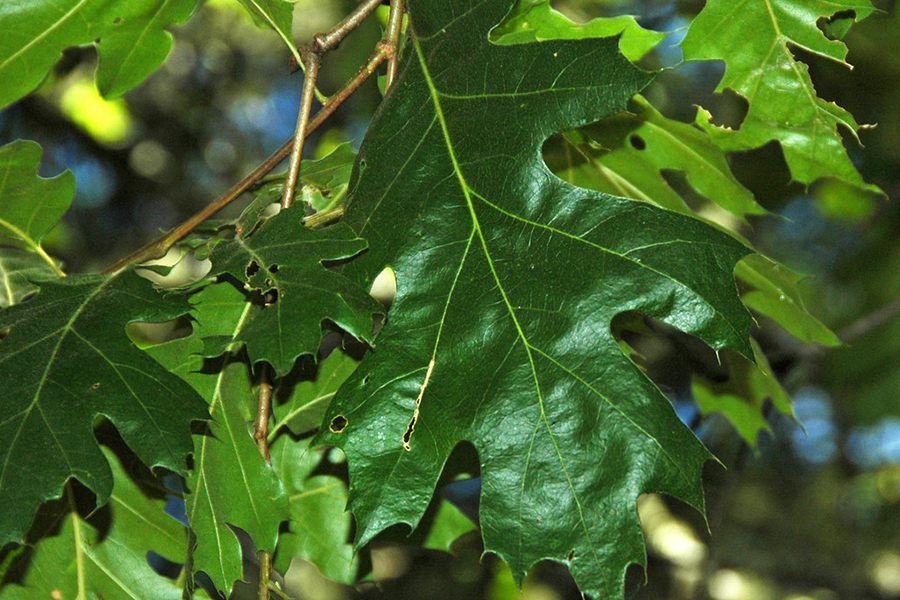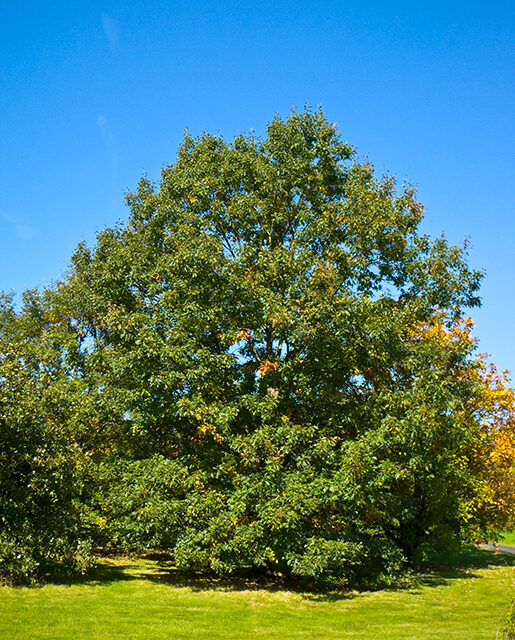Quercus velutina
The black oak’s inner bark contains a yellow pigment called quercitron, which is why historically black oak was called yellow oak.
Location
Today, there are over fifty black oak growing in the arboretum. Take a walk along Larch Lane Trail and find them in abundance along May Street.


History at Hadwen
Whilst we don’t have specific documents showing that Hadwen planted black oak on the property, in 1900 he writes that he has various oak trees “of nature’s planting” up to four feet in diameter and sixty feet spread of limb. A preliminary report on trees in the arboretum documents the black oak growing here since at least 1971.
Keep Learning
Detailed Species Information
Black oak, sometimes called eastern black oak, is a deciduous tree in the red oak group in the family Fagaceae. These oaks are found widely across eastern and central North America. Depending on the region, black oak varies in size and diameter. In its northern range, black oak typically reaches a height of 66–82 feet (20–25 meters) and a diameter of 3 feet (0.9 meters), but can grow considerably taller and wider in its southern range. The leaves of the black oak have 5–7 tri-tipped lobes separated by deep U-shaped notches. Black oak is a monoecious species, producing male and female seeds on a single plant.
After about 20 years, black oaks reach maturity and begin to produce acorns, large, round nuts with a cap covering slightly less than half of the nut. These seeds are typically dispersed by small mammals and some larger birds like bluejays. The inner bark of black oak contains a yellow pigment called quercitron, which historically led to black oak being called yellow oak. Typically, black oak grows best in well-drained but moist loam, clay, or soil due to its origination from regions with glacial deposits, sandstones, limestone, and shales.
